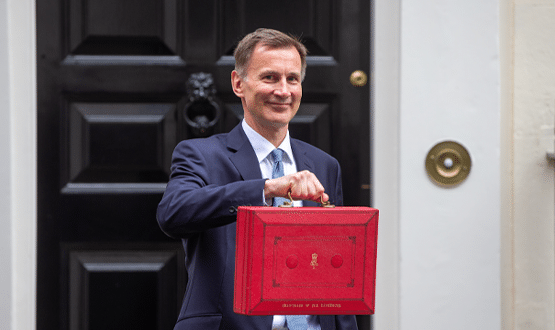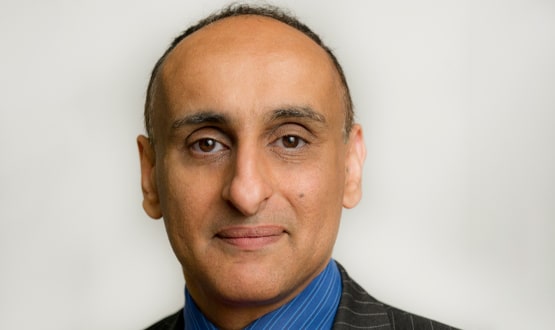Paper cuts

For an idea that has been promoted by major figures in UK healthcare policy for more than two years, there is still a large degree of uncertainty about what is meant by a ‘paperless’ NHS.
Health secretary Jeremy Hunt told a think-tank that he wanted a paperless NHS by 2018 back in January 2013, arguing that this would lead to significant efficiency savings at a time of austerity.
So it was telling that during a meeting of the National Information Board in March this year, Robert Tinlin, chief executive of Southend-on-Sea borough council, could say that one of the key questions still to answer was “how do we define paperless?”
“If Tim [Kelsey, NHS England’s director of patients and information and the NIB chair] expanded this meeting by an hour and went round and asked us for two sentences on what paperless means we would get something like 85 different definitions,” Tinlin told the meeting.
“So the first thing we are going to try and do is define paperless. Because if we are going to try and get to a version of paperless by 2020 [the revised target in November’s ‘Personalised Health and Care 2020’ framework] then we have to have one definition of it. We will all disagree with it, but we will have that one definition. Hopefully.”
A national plan
Of course, ‘paperless’ does not have to be taken literally. At one level, ‘paperless’ can be seen as the expression of an ambition; to complete the digitisation of the NHS that was started by the Information for Health strategy in 1998, taken forward by the National Programme for IT in 2002, and left uncompleted when it largely failed to deliver ‘strategic’ systems to trusts.
At another level, Andy Vernon, healthcare technology expert at PA Consulting Group told EHI News that ‘paper-lite’ might be a better term to cover “the digitisation of paper medical records, a core electronic patient record system for the major departments, electronic prescribing systems, and mobile working technologies in specific settings.”
Politicians and digital enthusiasts also extend the term to cover some of the patient access and digital services agenda. Still, Hunt and his advisors have often come close to using ‘paperless’ as a thing to which targets and money could be attached.
Back in 2012, Kelsey, who was then new in post said he was “pushing for the end of 2015 to eradicate paper from the NHS” – starting with the introduction of a new e-Referrals service, and a multi-channel platform to replace NHS Choices and NHS 111 (both of which remain ambitions).
Hunt then took up the baton with his speech to Policy Exchange, in which specific commitments included a March 2015 deadline for everyone to have online access to their own health records (a pledge repeated in the Conservative manifesto this week ) and an April 2018 deadline for digital information to be fully available across NHS and social care services, barring any individual opt outs.
More recently, Simon Stevens, the new chief executive of the NHS England put a big emphasis on technology in the NHS ‘Five Year Forward View’, to try and close a £30 billion gap between flat funding and rising demand by 2020-21.
These ambitions were taken further in PHaC 2020, which set out a new goal for patients to be able to both access and write to their health records by 2018 and to make “all patient and care records digital, real-time and interoperable” by 2020. Kelsey told EHI News at the time that these had to be “hard stops” if the NHS was to remain viable.
A funding blow
Amid these policy announcements, the government has provided several batches of funding to support its digital ambitions.
These include the ‘Safer Hospitals, Safer Wards: Technology Fund’ and the ‘Integrated Digital Care Fund’ – commonly known as tech fund 1 and tech fund 2 – the two Nursing Technology Funds, and challenge funds for integrated care and modernised primary care initiatives.
Unfortunately, the two rounds of tech fund money, which Hunt claimed would deliver £500 million of central funding to NHS IT, and £1 billion when match funding was included, delivered nothing like that.
The second round, in particular, was significantly delayed, and then reduced from £240 million to just £43 million in February this year.
The tech fund money that will be spent will achieve something. The first round is set to distribute £195 million to large electronic patient record projects, e-prescribing programmes, and three ‘integrated digital care record pioneers.’
The recent CDMI + 12 report on movements in the Clinical Digital Maturity Index maintained by EHI Intelligence shows that this is already having a measurable impact on the digital maturity of trusts. It also shows that the nursing tech funds have had a demonstrable impact, particularly in the nursing observations and vital signs spaces.
However, the nature of the bidding process for the first round of tech fund money, and the delays to the outcome of the second round, have meant that a lot of money has gone to big trusts with big projects already well underway; which was not the initial intention.
Loss of priority?
In addition, Natalie Bateman, head of health, social care and local government at techUK, told EHI News the reallocation of funds “not only puts the paperless goal at risk from a practical perspective, but it suggests that the digital health agenda is not a priority at a national level.”
On the practical front, PA Consulting Group’s Vernon said he is concerned that the “vast majority of NHS organisations simply do not have the financial resources to undertake the considerable investments in technology required.
“[That is not just in terms of the] applications to manage information at the front line, but also to upgrade their communications infrastructure to support these technologies.” He also expressed concern that the “ongoing costs of maintaining a paperless NHS are not well understood.”
TechUK’s Bateman added: “If the next government is to make [a paperless NHS] a reality, they need to prioritise the investment in digital approaches.
“They also urgently need to engage healthcare professionals, patients and the public on the value of digital solutions and services, while overcoming the concerns around the digital agenda, such as information governance and data privacy.”
After the election
The election is a major landmark on the journey towards paperless; or towards abandoning the latest vision for a digital NHS. Despite the cuts to tech fund 2 Hunt has been a major advocate for healthcare IT; and there is every chance he will no longer be health secretary after 7 May.
The Labour party manifesto contains no specific commitments for a digital NHS, and seems to have given up on some of the modernising IT pledges that have characterised similar documents in the past.
That has left the Liberal Democrats to make the most noise about healthcare technology ahead of the election. The party has announced plans to use £250 million from the sale of “redundant NHS assets” to fund new technologies for the health service.
Some specific aims of the Transformation Fund, reflected in the party’s manifesto, include making more doctor appointments and repeat prescriptions available online and encouraging the uptake of consultations using Skype. However, the party’s chances of being able to act on these seem debatable, at best.
Even so, John Williams of the Royal College of Physicians, said he would be “very surprised” if there was a change in direction after the election.
He argued that there is a growing awareness that good record keeping is necessary to improve clinical information and decision making and argued the priority for an incoming government must be to support the introduction of standards for doing this.
All about the money
On the bigger picture front, as well, it’s clear that the post-election landscape will be dominated by the need to generate significant efficiency savings, and to generate them by doing public health, access and care differently.
The Conservatives and the Liberal Democrats have committed to finding an extra £8 billion a year for the NHS by 2020, with Labour promising a better care fund; but this won’t cover the £30 billion challenge set out in the Five Year Forward View.
The Liberal Democrats have gone furthest in recognising that this week, by setting out detailed plans in their manifesto for integrated health and social care and new commissioning/provider models.
But all the parties are essentially committed to this agenda, since they have presented their funding commitments as support for Stevens’ plans. And they will require significant investment in data collection and use, shared records, and patient facing technology.
Paperless, as a term to cover one big digital ambition may have had its day, though, given the range of approaches now being tried to share information or records across care settings, and the spread of apps for digitally savvy patients.
TechUK’s Bateman says stakeholders need to bear in mind that: “[regardless of the pace of digitisation in health and social care, there may never be universality of data, systems and processes that meet the diverse needs and complexities of health and social care patients, clients and staff.”




